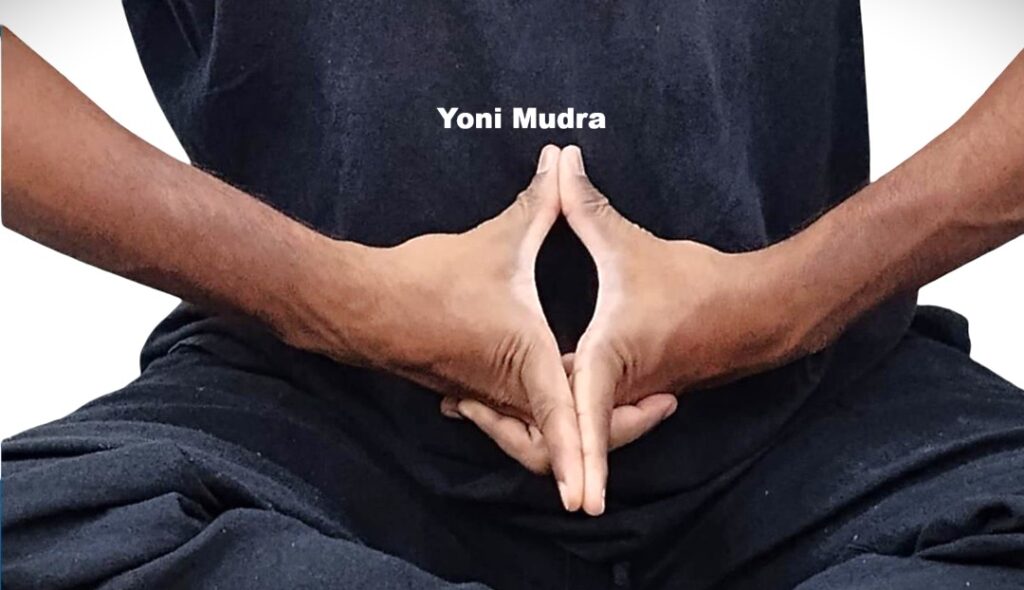Uttara Bodhi Mudra
Introduction
Uttara Bodhi Mudra is a hand gesture in yoga designed to stimulate higher consciousness, inner wisdom, and spiritual awareness. It is often practiced to enhance meditation, calm the mind, and promote mental clarity.
The term Uttara Bodhi comes from Sanskrit, meaning “supreme enlightenment” or “higher wisdom”, reflecting the mudra’s purpose of guiding the practitioner toward spiritual insight and inner awakening. It is commonly used in meditative and yogic practices aimed at spiritual growth.
Meaning
Uttara: Supreme, higher.
Bodhi: Enlightenment, wisdom.
Mudra: Gesture used to direct pranic energy and support mental and spiritual states.
Overall Meaning:
Uttara Bodhi Mudra symbolizes higher consciousness, spiritual awakening, and clarity of thought, facilitating a connection between mind, body, and spirit.
How to Perform / Practice
Sit comfortably in a meditative posture (Padmasana, Sukhasana, or Vajrasana) with a straight spine.
Bring the hands in front of the chest.
Interlock fingers so that the index fingers point downward and touch each other, forming a triangle pointing toward the floor.
Place the thumbs gently together, forming a small triangle pointing upward.
Close your eyes and take slow, deep breaths, directing attention inward toward the navel or heart center.
Practice for 10–15 minutes, gradually increasing to 20–30 minutes.
Focus on breath, inner awareness, and mental calmness throughout the practice.
Tip: Best practiced in a quiet environment to enhance concentration and introspection.
Benefits
Physical Benefits:
Reduces tension in hands, wrists, and arms.
Promotes relaxation and lowers stress-related symptoms.
Supports improved circulation in upper limbs.
Mental & Emotional Benefits:
Calms the mind and reduces anxiety or restlessness.
Enhances focus, concentration, and mental clarity.
Encourages emotional stability and inner peace.
Energetic / Spiritual Benefits:
Activates higher energy centers in the body (including throat and third eye chakras).
Supports meditation and spiritual practices.
Facilitates a sense of inner wisdom, insight, and higher awareness.
Contraindications
Avoid if there is hand, finger, or wrist injury.
Not recommended for severe arthritis or joint pain in fingers or hands.
Discontinue if numbness, tingling, or discomfort occurs.
Anatomy & Physiology
Muscles: Engages intrinsic hand muscles (lumbricals, interossei) to maintain finger positions.
Joints: Flexion at most fingers; extension at index fingers.
Nervous System: Activates parasympathetic system, reducing stress while maintaining alertness.
Circulation: Improves microcirculation in hands and fingers; supports subtle energy flow toward the chest and head.
Kinesiology
Improves fine motor coordination of fingers and hands.
Supports static posture stability during meditation.
Encourages relaxed hand posture, facilitating mental focus.
Neurology
Stimulates brain regions associated with focus, higher reasoning, and spiritual awareness.
Balances sympathetic and parasympathetic activity, promoting calm alertness.
Supports neural plasticity related to meditation, attention, and emotional regulation.
Duration of Practice
Daily Practice: 10–20 minutes, can be divided into shorter sessions.
Short Practice: 5 minutes during meditation or pranayama for quick mental clarity.
Best practiced in combination with pranayama or meditation for spiritual and mental benefits.
Counter Mudra
If excess tension or drowsiness occurs, switch to Gyan Mudra or Chala Mudra.
Gentle hand stretching or shaking can release tension after prolonged practice.
Conclusion
Uttara Bodhi Mudra is a powerful gesture to enhance spiritual awareness, calm the mind, and stimulate higher consciousness. Regular practice harmonizes physical, mental, and energetic systems, making it ideal for meditation, mindfulness, and spiritual development. Proper execution ensures maximum benefits without discomfort.
FAQ
Q1: Can beginners practice Uttara Bodhi Mudra?
A: Yes, it is safe and simple; start with 5 minutes and gradually increase.
Q2: Can it help with meditation?
A: Yes, it enhances focus, calmness, and spiritual awareness during meditation.
Q3: Can it be combined with other mudras?
A: Yes, it can be combined with Dhyana Mudra or Prana Mudra for enhanced meditative effect.
Q4: Is it suitable for stress relief?
A: Yes, it promotes relaxation, calmness, and mental clarity.
References
Swami Satyananda Saraswati, Mudras for Healing and Transformation.
Iyengar, B.K.S., Light on Yoga.
Saraswati, S., Pranayama and Mudras in Yoga Therapy.
Fishman, L., Yoga for Emotional Balance.
Journal of Bodywork and Movement Therapies, 2018; 22(4): Effects of Hand Mudras on Mental and Physiological Functions.
